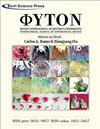Transcriptome Analysis of Molecular Mechanisms Underlying Phenotypic Variation in Phaseolus vulgaris Mutant ‘nts’
IF 1.2
4区 生物学
Q3 PLANT SCIENCES
Phyton-international Journal of Experimental Botany
Pub Date : 2023-01-01
DOI:10.32604/phyton.2023.043151
引用次数: 0
Abstract
The phenotype of a common bean plant is often closely related to its yield, and the yield of plants with reduced height or poor stem development during growth is low. Mutants serve as an essential gene resource for common bean breeding genetic research. Although model plants and crops are studied to comprehend the molecular mechanisms and genetic basis of plant phenotypes, the molecular mechanism of phenotypic variation in common beans remains underexplored. We here used the mutant ‘nts’ as material for transcriptome sequencing analysis. This mutant was obtained through 60Co-γ irradiation from the common bean variety ‘A18’. Differentially expressed genes were mainly enriched in GO functional entries such as cell wall organization, auxin response and transcription factor activity. Metabolic pathways significantly enriched in KEGG analysis included plant hormone signal transduction pathways, phenylpropanoid biosynthesis pathways, and fructose and mannose metabolic pathways. AUX1 (Phvul.001G241500), the gene responsible for auxin transport, may be the key gene for auxin content inhibition. In the plant hormone signal transduction pathway, AUX1 expression was downregulated and auxin transport across the membrane was blocked, resulting in stunted growth of the mutant ‘nts’. The results provide important clues for revealing the molecular mechanism of ‘nts’ phenotype regulation in bean mutants and offer basic materials for breeding beneficial phenotypes of bean varieties.菜豆突变体nts表型变异分子机制的转录组分析
普通豆科植物的表型往往与其产量密切相关,生长过程中高低或茎发育不良的植株产量较低。突变体是普通豆类育种遗传研究的重要基因资源。虽然对模式植物和作物进行了研究,以了解植物表型的分子机制和遗传基础,但对普通豆表型变异的分子机制尚不清楚。我们在这里使用突变体“nts”作为转录组测序分析的材料。该突变体是通过60Co-γ辐照从普通豆品种A18中获得的。差异表达基因主要富集于氧化石墨烯功能入口,如细胞壁组织、生长素反应和转录因子活性。KEGG分析中显著富集的代谢途径包括植物激素信号转导途径、苯丙类生物合成途径以及果糖和甘露糖代谢途径。负责生长素运输的基因AUX1 (phvull . 001g241500)可能是抑制生长素含量的关键基因。在植物激素信号转导通路中,AUX1表达下调,生长素跨膜运输受阻,导致突变体“nts”生长发育迟缓。该结果为揭示“nts”在大豆突变体中表型调控的分子机制提供了重要线索,并为培育大豆品种的有益表型提供了基础材料。
本文章由计算机程序翻译,如有差异,请以英文原文为准。
求助全文
约1分钟内获得全文
求助全文
来源期刊
CiteScore
1.90
自引率
11.80%
发文量
17
审稿时长
12 months
期刊介绍:
Phyton-International Journal of Experimental Botany is an international journal that publishes on the broadest aspects of plant biology and ecology. The journal welcomes the original and exciting submissions that provide new and fundamental insights into the origins, development, and function of plants from the molecular to the whole organism and its interactions within the biotic and abiotic environment. Phyton-International Journal of Experimental Botany publishes outstanding research in the plant and ecology sciences, especially in the areas of plant physiology and biochemistry, plant metabolism, plant ecology and evolution, as well as those making use of synthetic, modeling, bioinformatics, and -omics tools. Manuscripts submitted to this journal must not be under simultaneous consideration or have been published elsewhere, either in part or in whole.

 求助内容:
求助内容: 应助结果提醒方式:
应助结果提醒方式:


